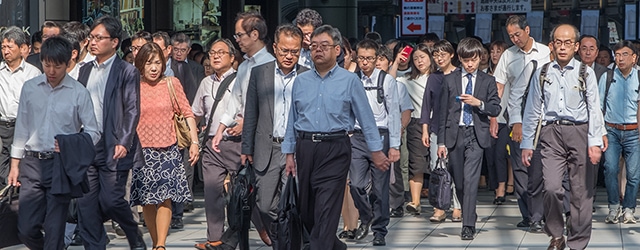Japan needs workers from abroad to meet labor market demands.

Japan is opening its doors to foreign blue-collar workers starting as early as April, an unprecedented relaxation of immigration rules for a country traditionally known for its gatekeeping policy and largely homogenous population.
Not that the change is without controversy. Passed by Parliament’s lower house, the new immigration law has sparked heated opposition, both from conservatives who worry that foreigners will upset the social order and from activists who fear worker-rights violations.
Amid this criticism, Prime Minister Shinzo Abe has stressed that the proposed law is not an overhaul of immigration policy and that Japan will only accept foreigners “who have specific skills and can work immediately to address serious labor shortages.”
Currently, Japan hosts 1.3 million foreign workers. The plan targets workers in 14 sectors—from agriculture to nursing to construction—for two categories of visas, allowing up to a quarter-million immigrants to spend five to 10 years in Japan. Workers with more advanced skills and Japanese language proficiency would be entitled to visa extensions and can bring over family members.
“This isn’t about Japan becoming a multicultural society and it’s not about Japan opening its doors to become more globally oriented,” Gabriele Vogt, a professor of Japanese politics and society at the University of Hamburg told Global Finance. “This is just very plain labor-market politics.”
Japan’s population has been shrinking since it peaked at 128 million in 2010, resulting in an unemployment rate hovering around 2.5%. Only 100 jobseekers chased every 164 jobs in October 2018. Pay is rising at its fastest pace in 21 years, and workforce-participation levels for women and workers over 65 have also reached record highs.
With the birth rate in 2017 hitting the lowest number since 1899 and average life expectancy topping the world at 85.5, Japan’s population is projected to shrink by about 16 million, or nearly 13%, over the next 25 years.
The new immigration law isn’t Japan’s first stab at attracting migrant workers. It started importing migrants in the early 1990s but recruited only from the Japanese diaspora in Latin America and, more recently, from Southeast Asian nations such as Vietnam.
Those programs proved insufficient to meet Tokyo’s increasing labor demands; they also drew criticism for failure to integrate migrants and alleged exploitation of cheap labor. The government has promised that under the new visa system, foreign laborers will be guaranteed the same level of pay as Japanese workers.



